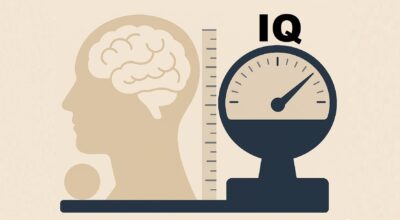Introduction
Emotional Intelligence Test opens the door to understanding how you navigate feelings, build deeper connections, and handle life’s challenges with clarity. Imagine discovering concrete steps to gauge your emotional skills, pinpoint where you excel, and recognize areas for growth. In this exploration, you will find practical guidance, fresh insights, and engaging examples that reveal how to measure emotional intelligence and spot its hallmarks in yourself.
Table of contents
- 1. Why Emotional Intelligence Matters
- 2. How to Measure Emotional Intelligence
- 3. Steps to Take an Emotional Intelligence Test Effectively
- 4. Signs You Are Emotionally Intelligent
- 5. Practical Steps to Enhance Your Emotional Intelligence
- 6. Practical Examples and Case Studies
- 7. Myths and Misconceptions About Emotional Intelligence Tests
- 8. Frequently Asked Questions (FAQs)
- 9. Integrating Emotional Intelligence into Daily Life
- 10. Bringing Emotional Intelligence into Professional Development
- 11. Resources, Tools, and References
- Conclusion
- references
1. Why Emotional Intelligence Matters
1.1. Defining Emotional Intelligence and Its Real-World Impact
Emotional intelligence (EI) involves recognizing, understanding, and managing emotions—both your own and others’. Rather than simply explaining what EI means, consider how it transforms daily life:
- In relationships, you respond with empathy instead of frustration, strengthening trust and harmony.
- At work, you remain composed under pressure, turning setbacks into learning opportunities and maintaining productivity.
- With yourself, you notice unhelpful thoughts and shift toward supportive self-talk, boosting mental well-being.
Moreover, Yale University researchers (2019) found that individuals with higher EI outperform peers by about 20 percent in collaborative tasks, highlighting how emotional skills translate into measurable success. Thus, having a reliable way to measure EI goes beyond curiosity—it can shape your career, relationships, and personal growth.
1.2. Common Misconceptions About Emotional Intelligence
Many assume EI is a fixed trait or simply “being nice.” In reality:
- Learnable Competencies: Research from Harvard Business School (2018) shows targeted training can improve specific EI skills.
- Empathy vs. Agreement: You can genuinely understand someone’s emotions without automatically agreeing with their perspective.
- Balance, Not Overwhelm: High EI isn’t about heightened sensitivity; it’s about emotional balance and effective decision-making.
Believing that EI is innate or equates to being “soft” overlooks how emotional skills also involve setting boundaries, making tough calls, and addressing conflicts directly.
2. How to Measure Emotional Intelligence
2.1. The Evolution of Emotional Intelligence Tests
EI assessments have come a long way:
- 1990: Drs. Peter Salovey and John D. Mayer coined “emotional intelligence” and introduced its foundational framework.
- 1995: Daniel Goleman popularized EI in his bestselling book, illustrating how EI influences leadership and organizational outcomes.
- 2002: TalentSmart launched a widely used commercial EI test, now taken by over 1 million people globally.
- 2015: Advances in neuroscience enabled brain-imaging studies linking specific neural patterns to high emotional skills, adding an objective layer to measurement.
Understanding this evolution clarifies why contemporary EI tests often combine self-report scales, performance tasks, and peer feedback rather than relying on a single questionnaire.
2.2. Self-Report Questionnaires: Pros and Cons
Most EI assessments start with self-report questionnaires. You encounter statements like “I remain calm under pressure” or “I identify my emotions easily,” rating them on a scale (e.g., “Strongly Disagree” to “Strongly Agree”).
- Strengths:
- Accessibility: Available online anytime, often free or under $50.
- Quick Insights: In under 30 minutes, you receive an overview of your EI profile.
- Broad Reach: Large datasets allow normative comparisons across demographics.
- Limitations:
- Self-Perception Bias: You might overestimate your abilities if you lack honest self-awareness.
- Cultural Differences: Question wording may not translate seamlessly across languages or societies.
- Static Snapshot: A single questionnaire cannot capture emotional fluctuations over time.
For example, someone might rate themselves as highly self-regulated on a calm day but respond very differently under extreme stress. To address these limitations, pair self-reports with other methods such as peer feedback or performance-based tasks.
2.3. 360-Degree Feedback: Input from Multiple Perspectives
360-degree feedback involves gathering assessments from colleagues, friends, or family. Follow these steps to implement it effectively:
- Select Raters Carefully: Choose at least six people who interact with you in various contexts (work, social, family).
- Use a Validated Instrument: Tests like the Emotional and Social Competence Inventory (ESCI) from Korn Ferry offer reliable frameworks.
- Maintain Confidentiality: Encourage honest feedback by ensuring anonymity.
- Compare Self to Others: Identify areas where you rate yourself differently than peers do. If you view yourself as highly empathetic but colleagues disagree, address that gap.
A 2017 University of Manchester study found professionals who received structured 360-degree EI feedback and followed up with coaching improved performance by 25 percent within six months.
2.4. Behavioral Assessments and Real-Life Scenarios
Going beyond questionnaires, you can measure EI through simulated challenges:
- Role-Playing Exercises:
- Conflict Resolution: One person plays a frustrated customer, and you practice de-escalation techniques.
- Team Pressure Simulation: Recreate a scenario with tight deadlines and multiple demands to observe how you regulate stress.
- Emotion Recognition Tasks:
- Facial Expression Tests: Use apps showing micro-expressions; your accuracy reveals your perceptiveness.
- Vocal Tone Drills: Listen to recordings of masked emotions (e.g., someone hiding sadness) and guess the true feeling.
For instance, a 2020 Stanford study showed participants who scored above 85 percent on facial recognition tasks also demonstrated stronger emotional regulation when confronted with stress.
3. Steps to Take an Emotional Intelligence Test Effectively
3.1. Prepare Mindfully
- Choose a Quiet Environment: Eliminate distractions to ensure focus.
- Allocate Enough Time: Set aside 45–60 minutes so you can answer thoughtfully.
- Gather Materials: Keep a journal on hand to jot down immediate reflections or surprises.
- Clarify Your Motivation: Ask yourself why you want to measure EI—growth, career advancement, better relationships—so you stay honest in your responses.
For example, if your goal is to refine leadership skills, concentrate on test sections related to managing team dynamics.
3.2. Select a Validated Tool
Look for well-established, non-proprietary assessments:
- Mayer-Salovey-Caruso Emotional Intelligence Test (MSCEIT): A performance-based tool assessing real-world emotional problem-solving.
- Emotional Quotient Inventory (EQI) by Multi-Health Systems: A broad social-emotional assessment with strong psychometric support.
- Situational Test of Emotional Management (STEM): Presents real-life scenarios and asks you to choose optimal responses.
When choosing, verify:
- Validation Studies: Ensure peer-reviewed research backs the test’s reliability.
- Cultural Adaptations: Confirm there’s a version in your native language if English isn’t your first language.
- Cost vs. Depth: Some comprehensive tests cost hundreds of dollars, while others offer solid insights for less.
3.3. Take the Test Thoughtfully
- Read Instructions Carefully: Misinterpreting items can skew results.
- Answer Honestly: Resist picking “ideal” responses; choose what truly reflects your usual behavior.
- Manage Your Time: Some sections are timed; practice pacing so you don’t rush.
- Make Immediate Notes: After each section, jot down what surprised you or what felt most accurate to plan your next steps.
If you find emotion-recognition tasks challenging, note the specific moments, what you felt, and how you reacted—this clarity pinpoints growth areas.
3.4. Analyze and Interpret Your Results
After finishing:
- Review Overall Scores: Identify major strengths (e.g., high social awareness) and weaknesses (e.g., lower impulse control).
- Compare to Norms: Percentile ranks help you understand where you stand relative to peers; a 70th percentile means you scored above 70 percent of test-takers.
- Examine Subscale Scores: Tests like the MSCEIT break EI into four branches:
- Perceiving Emotions
- Facilitating Thought
- Understanding Emotions
- Managing Emotions
Knowing which branch needs improvement guides targeted action.
- Seek Expert Guidance: Share results with a coach or counselor specializing in EI to gain deeper insights, especially if unexpected gaps emerge.
4. Signs You Are Emotionally Intelligent
4.1. You Recognize and Label Your Emotions Precisely
- Instead of saying, “I feel bad,” you articulate, “I feel disappointed because I missed my goal.”
- A University of Pennsylvania study (2021) found that people who label emotions accurately experience 40 percent fewer mood swings.
- Practice: Keep an emotion diary. Three times daily, label your dominant feeling and note its trigger. Over a few weeks, patterns emerge, revealing emotional blind spots.
4.2. You Respond Deliberately Rather Than React Impulsively
- When someone criticizes you, you pause, take a breath, and ask clarifying questions instead of defending instantly.
- A Stanford study (2018) showed that a 5-second breathing exercise before responding in heated moments reduced impulsive replies by 60 percent.
- Example: During a tense family discussion, you might say, “I hear your concern. Let me process this before we continue.” By managing your emotional state, you protect relationships from unnecessary damage.
4.3. You Empathize Without Losing Objectivity
- Rather than saying, “I feel your pain, so I’ll fix everything,” you say, “I understand you’re upset. How can I support you while respecting your decisions?”
- Cambridge University researchers (2020) found that high-EI individuals sense others’ distress without absorbing it, reducing emotional burnout by 33 percent.
- Practice: When a friend is stressed, reflect back: “It sounds like you’re overwhelmed by work deadlines.” This shows understanding without taking on their anxiety.
4.4. You Manage Stress Constructively
- Instead of ignoring stress, you acknowledge tension and use coping strategies—short walks, deep breaths, or quick journaling.
- A Johns Hopkins survey (2019) found that people who used at least two healthy stress-relief techniques daily scored 22 percent higher in EI.
- Practical Step: Create a “Stress Action Plan” listing three quick activities (e.g., 3-minute stretch, 5-minute walk, or 2-minute breathing) to deploy when tension rises.
4.5. You Give and Receive Constructive Feedback
- When colleagues err, you focus on behaviors: “I noticed the report missed key metrics,” rather than attacking character. You also ask, “How can I improve my updates?”
- An MIT study (2022) showed that professionals engaged in regular, balanced feedback reported 18 percent higher job satisfaction and exhibited greater EI improvement over time.
- Example: In quarterly reviews, you invite peers to share how your communication style affects their work, building trust and demonstrating maturity.
4.6. You Adapt Your Emotions to Changing Circumstances
- When plans change, rather than panicking, you assess alternatives, adjust expectations, and remain calm.
- An Oxford University study (2016) found that adaptable individuals scored 15 percent higher on EI scales, as they flexibly shift emotional responses.
- Strategy: Simulate unexpected changes—ask a friend to introduce a random variable in your planning session—and notice how you recalibrate. Practicing this builds resilience and versatile emotional responses.
5. Practical Steps to Enhance Your Emotional Intelligence
5.1. Build Accurate Self-Awareness
- Keep an Emotion Journal: Record daily triggers, reactions, and outcomes. After two weeks, review entries to spot recurring pitfalls.
- Practice Mindfulness: Spend 5 minutes each morning scanning your body for tension. Early awareness prevents escalation.
- Seek External Perspective: Ask a trusted friend or mentor to point out behaviors you might overlook, such as raised tone or rushed speech when stressed.
5.2. Improve Your Emotional Vocabulary
- Expand Word Choice: Instead of “sad,” learn terms like “melancholic,” “disheartened,” or “grieved.”
- Use Visual Aids: Emotion charts or apps with facial cues help you refine recognition.
- Example Exercise: Each evening, pick one strong emotional moment and write down at least three possible labels. If you felt anger at work, consider “irritated,” “frustrated,” or “resentful.”
5.3. Strengthen Emotion Regulation
- Apply the “STOP” Technique:
- S: Stop and pause.
- T: Take a deep breath.
- O: Observe your thoughts and feelings.
- P: Proceed with intention.
- Debrief Briefly After Stressful Events: Spend 5 minutes analyzing triggers and envision alternative responses.
- Use Cognitive Reframing: When negative thoughts arise, ask, “Is there another way to view this?” If a friend cancels plans, think, “They may be busy, not uninterested,” instead of assuming rejection.
5.4. Cultivate Strategic Empathy
- Practice Perspective-Taking: Before dismissing someone’s viewpoint, ask, “If I were in their position, how might I feel?” This deepens understanding without blind agreement.
- Engage in Active Listening: In conversations, paraphrase to confirm accuracy: “So you’re feeling stressed because deadlines shifted suddenly?” This invites further sharing.
- Example: If a family member shares burnout, you might say, “It seems the extra workload is overwhelming. Which part feels most challenging?” This approach opens deeper discussion while respecting their autonomy.
5.5. Enhance Your Social Skills
- Role-Play Realistic Scenarios: Simulate networking events or difficult discussions with a friend or coach. Focus on tone, body language, and phrasing.
- Use “I” Statements: When addressing issues, frame feedback like, “I feel concerned when reports arrive late,” which reduces defensiveness.
- Expand Your Support Network: Join groups or clubs—such as a local book club or parent support network—where diverse interactions strengthen adaptability and reduce biases.
6. Practical Examples and Case Studies
6.1. Case Study: From Reactive to Reflective
Background:
- Sara, a marketing manager at a mid-sized company in 2023, often snapped at colleagues when projects fell behind. Her impulsive reactions caused team friction, missed deadlines, and low morale.
Intervention Steps:
- Baseline Assessment: Sara took the MSCEIT, scoring in the 30th percentile for Managing Emotions.
- Emotion Journal: For 15 days, she recorded each irritation: triggers, thoughts, and outcomes.
- Mindfulness Practice: She spent 5 minutes each morning on guided breathing to cultivate early stress awareness.
- Feedback Sessions: Bi-weekly meetings with her supervisor and peers highlighted moments when she raised her voice or sent terse emails.
Outcomes After Four Months:
- EI Improvement: Sara’s Managing Emotions score rose to the 55th percentile.
- Team Performance: The marketing team’s project delivery rate improved by 18 percent.
- Personal Growth: Sara reported feeling “20 percent less anxious” when facing tight deadlines.
6.2. Exercise: Emotion Recognition Drill
- Gather Stimuli: Use an online tool that presents short video clips of various facial expressions.
- Set Timing: Allow 5 seconds per clip to mimic real-life quick judgments.
- Record Your Answers: Note your guessed emotion (e.g., anger, surprise, contempt).
- Check Accuracy: Compare your guess to the tool’s labels to track improvement.
Participants in a 2021 University of Toronto pilot study who practiced this drill three times a week for one month saw their accuracy rise from 60 percent to 82 percent, directly enhancing communication in group tasks.
7. Myths and Misconceptions About Emotional Intelligence Tests
7.1. Myth: EI Is Fixed and Unchangeable
- Reality: While certain tendencies may be innate, Caltech research (2019) showed that targeted practice—journaling, feedback sessions—can boost EI scores by 15 percent in six months.
7.2. Myth: Only “Soft” Jobs Benefit from High EI
- Reality: Whether you’re a software engineer, surgeon, or lawyer, EI matters. A Harvard Medical School study (2020) found that surgeons with higher EI had 25 percent fewer communication breakdowns in operating teams, leading to improved patient outcomes.
7.3. Myth: High EI Means Being Overly Sensitive
- Reality: True emotional intelligence involves assertiveness, setting boundaries, and making tough decisions when necessary. Leaders with strong EI often make unpopular, yet beneficial, choices for the greater good, balancing compassion with accountability.
8. Frequently Asked Questions (FAQs)
8.1. How Often Should You Retake an Emotional Intelligence Test?
- Recommendation: Retake a formal EI test every 6–12 months to track growth.
- Informal Checks: Conduct monthly self-reflection—journaling, quick peer check-ins—to maintain awareness and momentum.
8.2. Can EI Tests Be Culturally Biased?
- Yes: Cultural norms shape emotional expression. To minimize bias:
- Choose Adapted Versions: Many tests (e.g., MSCEIT, EQI) offer localized translations (Arabic, Mandarin, Spanish).
- Supplement with 360-Degree Feedback: Balances your self-reported bias with others’ observations.
8.3. Do High EI Scores Guarantee Success?
- Not Alone: High EI correlates with better collaboration, leadership, and mental health, but it’s one of several success factors. Combine EI with technical expertise, resilience, and domain knowledge for well-rounded growth.
9. Integrating Emotional Intelligence into Daily Life
9.1. Morning Rituals for Emotional Readiness
- Five-Minute Check-In: Upon waking, ask, “What emotions do I feel right now?” Label them.
- Set an Emotional Intention: Decide your core focus (e.g., “I will approach today’s challenges with calm curiosity”).
- Review Previous Entries: Briefly scan your emotion journal for lingering patterns to avoid repeating reactive behaviors.
These steps create a habit of emotional awareness, making you less vulnerable to being blindsided by intense feelings later.
9.2. Midday Accountability Check
- Pause at Lunch: Jot down any emotional peaks or volatility.
- Adjust Your Strategy: If you notice tension before a meeting, practice a quick breathing exercise or mental rehearsal.
- Seek Brief Feedback: Ask a colleague, “How do I come across right now?” Their input keeps you grounded in reality rather than assumptions.
9.3. Evening Reflection and Planning
- Review Emotional Wins and Misses: Recall instances where you managed emotions well or could’ve improved.
- Set a Focus for Tomorrow: If you reacted impulsively today, choose one strategy (e.g., “Use STOP before responding”) to apply tomorrow.
- Acknowledge Progress: Celebrate small victories—“I acknowledged frustration without snapping”—to reinforce positive habits.
10. Bringing Emotional Intelligence into Professional Development
10.1. Workshops and Training Programs
When selecting an EI workshop, ensure it:
- Includes Ongoing Coaching: One-off sessions rarely stick; look for programs with follow-up coaching to solidify skills.
- Offers Peer Interactions: Live role-play exercises with colleagues replicate workplace dynamics realistically.
- Measures Outcomes: Choose programs that compare pre- and post-training EI scores to demonstrate tangible impact.
For example, Dale Carnegie Training (2024) introduced a 12-week EI accelerator for mid-level managers, reporting an average promotion rate increase of 12 percent for participants within the next year.
10.2. Leadership and Emotional Intelligence
Leaders with high EI inspire loyalty, foster innovation, and navigate crises effectively. Key strategies include:
- Model Transparency: Share your decision-making process, including emotional considerations, to build trust.
- Use Emotion-Driven Vision: Frame goals through shared values and emotions: “Together, we’ll ease our clients’ stress and improve their lives.”
- Deliver Emotionally Intelligent Feedback: Begin with praise (“I value how you handled that pitch”) before constructive points (“Next time, let’s anticipate objections.”).
A 2022 McKinsey report noted that companies led by emotionally intelligent executives achieved 30 percent higher employee engagement and 18 percent greater profitability compared to peers.
11. Resources, Tools, and References
Below are reliable, non-paywalled sources you can consult to deepen your understanding and measurement of emotional intelligence:
- Mayer-Salovey-Caruso Emotional Intelligence Test (MSCEIT) – Visit the official site for details, sample items, and research articles on test validation.
- Emotional Quotient Inventory (EQI) by Multi-Health Systems – Free PDFs outline test structure, scoring, and normative data.
- TalentSmart EI Blog – A collection of expert articles offering practical techniques (e.g., “Four Steps to Boost Empathy”).
- “Emotional Intelligence” by Daniel Goleman (2006 Edition) – University libraries often provide PDF summaries covering EI fundamentals and leadership applications.
- Yale School of Management EI Research Papers – Publicly available studies linking EI and workplace performance.
- The Emotional Intelligence Network – A global non-profit sharing free webinars, tools, and case studies on EI in various sectors.
- UC Berkeley Greater Good Science Center – Offers free articles and worksheets on practicing EI in everyday life.
Conclusion
You now hold a comprehensive roadmap: how to measure Emotional Intelligence Test through validated tools, interpret your results, and identify signs of emotional prowess—self-awareness, intentional responses, balanced empathy, and effective stress management. You’ve explored practical daily routines—from morning check-ins to evening reflections—that cement these skills over time.
Remember, emotional intelligence isn’t a static trait but a dynamic skill set you refine through ongoing practice. Commit to honest feedback, conscious reflection, and targeted exercises. As you integrate these strategies, witness improved relationships, elevated work performance, and a fortified inner resilience. Ultimately, mastering emotional intelligence is not just a test you take—it is a life you cultivate.
references
Warning: The provided links lead only to the specified content. Other areas of those sites may contain material that conflicts with some beliefs or ethics. Please view only the intended page.
- Salovey & Mayer (1990) – Foundation of EI
“Salovey, P., & Mayer, J. D. (1990). Emotional intelligence. Imagination, Cognition and Personality, 9(3), 185–211.”
https://journals.sagepub.com/doi/10.2190/DUGG-P24E-52WK-6CDG - Harvard Business Review (2004) – What Makes a Leader?
“Goleman, D. (2004, January). What makes a leader? Harvard Business Review.”
https://hbr.org/2004/01/what-makes-a-leader - Berkeley Greater Good Science Center (2022) – Emotional Intelligence
“Greater Good Science Center. Research-backed articles and exercises on emotional intelligence.”
https://greatergood.berkeley.edu/topic/emotional_intelligence - TalentSmart (2023) – Emotional Intelligence Articles
“TalentSmart. Practical guides on boosting empathy and managing emotions.”
https://www.talentsmart.com/articles/

















